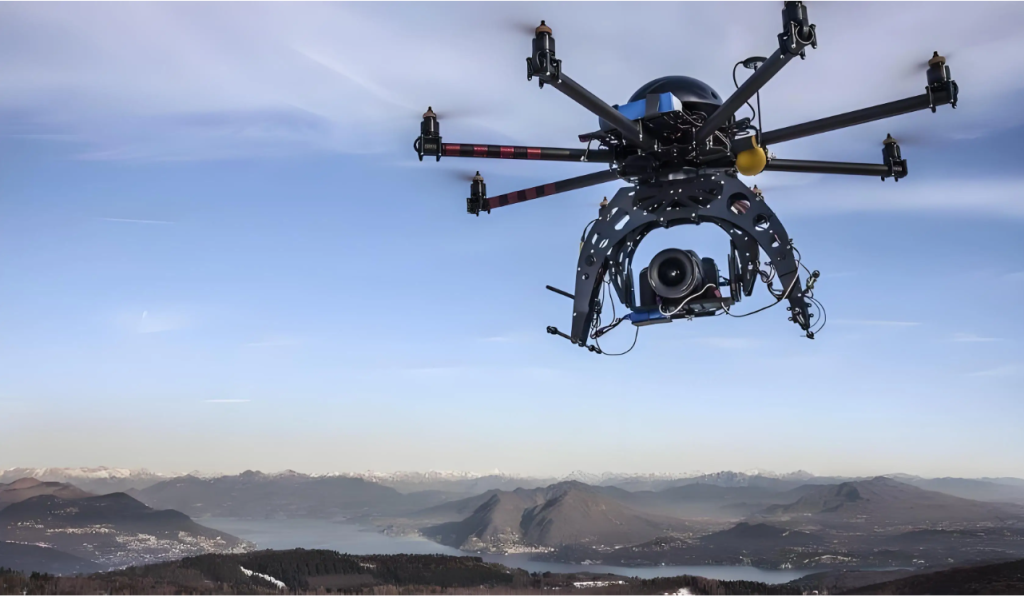The Future of Drone Logistics in the Low-Altitude Economy
Introduction
The low-altitude economy is emerging as a transformative force in modern logistics. With the rapid advancement of drone technology, businesses are shifting towards automated, airborne delivery systems that can operate efficiently in urban and rural environments. In China, this industry has seen a significant boost due to government-backed policies, advancements in AI-driven air traffic management, and breakthrough materials like graphene that enhance drone performance.

As companies explore drone logistics as a solution for last-mile delivery, medical supply transport, and industrial logistics, the integration of lightweight materials, high-capacity batteries, and advanced communication networks is essential to its success.
In this blog, we will analyze the key trends shaping drone logistics in the low-altitude economy and explore how graphene technology is revolutionizing drone capabilities.
1. The Rise of Drone Logistics in the Low-Altitude Economy
The concept of the low-altitude economy refers to commercial activities conducted in airspace below 1000 meters, including drone-based logistics, urban air mobility (UAM), and air taxis. As global e-commerce demand surges and traditional delivery infrastructure faces challenges such as traffic congestion and rising labor costs, drones are emerging as a highly efficient alternative for logistics operations.
Key Factors Driving Drone Logistics
✅ E-commerce Growth: Companies like JD.com and Alibaba are investing heavily in drone delivery to speed up order fulfillment.
✅ Urbanization: With increasing population density, traditional road-based logistics are becoming inefficient, making drones a viable option for last-mile delivery.
✅ Government Policies: China has introduced airspace management policies that support drone operations, paving the way for large-scale implementation.
✅ Technological Advancements: Innovations in AI, 5G connectivity, and materials science (such as graphene) are enhancing drone efficiency, flight time, and payload capacity.
As a result, drone logistics is transitioning from an experimental phase to a commercially viable solution in multiple sectors.
2. Challenges in Drone Logistics and the Need for Innovation
Despite its promising future, drone logistics faces significant technical and regulatory hurdles.
🔹 Limited Battery Life: Most commercial drones rely on lithium-ion batteries, which have low energy density and require frequent recharging.
🔹 Payload Constraints: Traditional drones are lightweight but weak, limiting their ability to transport heavier packages.
🔹 Weather Sensitivity: Current drone designs are vulnerable to strong winds, rain, and temperature fluctuations, making deliveries unreliable.
🔹 Regulatory Barriers: Airspace management, safety concerns, and flight restrictions are still evolving, slowing down mass deployment.
To overcome these obstacles, material innovations such as graphene are playing a critical role in enhancing drone performance and efficiency.
3. How Graphene is Transforming Drone Logistics
Graphene, a one-atom-thick layer of carbon, is recognized for its unmatched strength, lightness, and electrical conductivity. These properties are being leveraged to revolutionize drone logistics in three key ways:
(1) Graphene-Enhanced Batteries: Longer Flight Times & Faster Charging
Traditional lithium-ion batteries are one of the biggest limitations for drone logistics. With an average flight time of 20-30 minutes, most drones require frequent recharging, making large-scale logistics inefficient.
Graphene-based batteries offer:
✔ Higher energy density: Extends flight duration, allowing drones to cover longer distances.
✔ Faster charging times: Reduces downtime, increasing the efficiency of delivery networks.
✔ Greater durability: Graphene’s thermal stability prevents battery degradation, extending lifespan.
With graphene-enhanced batteries, logistics drones can operate for several hours instead of minutes, dramatically improving efficiency in urban and rural delivery networks.
(2) Lightweight Graphene Composites: Increased Payload Capacity
The structural weight of drones directly impacts their payload capacity and flight efficiency. Traditional materials like aluminum and carbon fiber add unnecessary weight, limiting package sizes.
Graphene composites offer:
✔ Ultra-lightweight structures: Reduces drone weight while maintaining strength.
✔ Higher payload capacity: Enables drones to carry heavier cargo while maintaining flight stability.
✔ Improved weather resistance: Enhances durability against wind, rain, and extreme temperatures.
This means drones can now transport heavier medical supplies, groceries, and industrial equipment with greater reliability.
(3) Graphene Sensors & AI Integration: Smarter Navigation Systems
Efficient drone logistics requires precision navigation and real-time data processing. Graphene-based electronics and AI systems are improving navigation accuracy, safety, and airspace management.
Graphene-based sensors offer:
✔ Enhanced signal processing: Allows drones to detect obstacles with higher accuracy.
✔ Real-time environmental monitoring: Improves safety in complex urban environments.
✔ Reduced power consumption: Extends battery life while enabling continuous data collection.
With graphene-powered AI systems, drones can navigate cities autonomously, improving traffic management and ensuring faster, more secure deliveries.
4. Future Trends in Drone Logistics and the Role of Graphene
As drone logistics continues to evolve, several emerging trends will shape its future:
🚀 Autonomous Drone Fleets: AI-powered, graphene-enhanced drones will operate in fully automated delivery networks.
🚀 Urban Air Mobility (UAM) Integration: Drones will be integrated with air taxis and smart city infrastructure to create seamless logistics ecosystems.
🚀 Green Logistics Solutions: Graphene-based drones will replace fuel-powered delivery vehicles, contributing to sustainable logistics operations.
🚀 AI-Driven Air Traffic Control: Graphene-enhanced AI systems will manage airspace, preventing collisions and optimizing flight paths.
By 2030, drone logistics is expected to be a fully automated, AI-driven ecosystem, supported by graphene-based innovations that ensure efficiency, sustainability, and scalability.
5. Conclusion: A Graphene-Powered Future for Drone Logistics
The low-altitude economy is rapidly evolving, and drone logistics is at its core. However, to overcome challenges related to battery life, structural limitations, and navigation precision, cutting-edge materials like graphene are essential.
Graphene technology is driving longer flight durations, higher payload capacities, and smarter navigation systems, allowing drones to become an efficient, scalable, and sustainable logistics solution.
As China continues to lead in low-altitude economy innovations, the combination of graphene technology, AI, and smart air traffic management will redefine global logistics. The next decade will see a paradigm shift in how goods are transported—from roads to the skies.
🚀 What’s Next?
Want to stay ahead in drone logistics? Follow our updates on graphene innovations and low-altitude economy trends. Contact us to explore graphene-based drone materials that can take your logistics to the next level!

